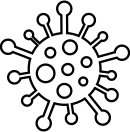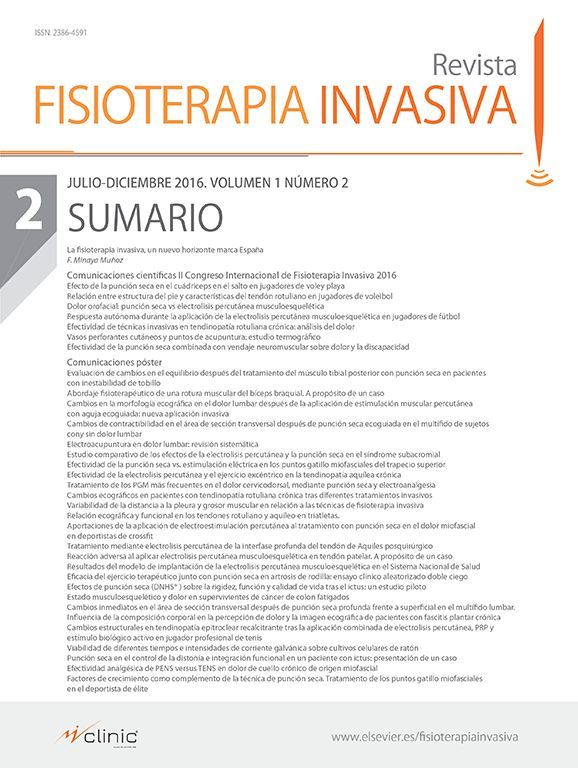Introducción: La técnica de punción seca consiste en atravesar la piel con una aguja maciza y destruir un área de puntos gatillo miofasciales. Los diferentes tipos de agujas y su manipulación podrían ser un factor a tener en cuenta para la elección de la aguja y su aplicación.
Objetivos: Evaluar las posibles modificaciones de las puntas de agujas por su uso clínico durante la punción seca.
Material y métodos: Se analizaron tres tipos de agujas: de 0,25 mm y de 0,32 mm de grosor respectivamente (AguPunt®) y de 0,25 mm (SEIRIN®) con dos equipos de microscopía electrónica de barrido (FEI Quanta 600 y JEOL JSM 6360LV) a 2.000 aumentos. Se evaluaron en las siguientes situaciones: agujas nuevas sin utilizar; usadas sin guantes; de 10 a 40 inserciones sobre músculo; de 2 a 10 impactos sobre hueso. Ocasionalmente se realizó microanálisis por difusión de RX con un Oxford Instruments, Inca.
Resultados: Las agujas nuevas mostraron partículas metálicas en su superficie; en las agujas manipuladas sin guantes se adherían muchas partículas de polvo; no había alteraciones en la morfología de las agujas ni con 10 inserciones en piel ni con 40 inserciones en músculo; después de colisionar con la escápula (2 y 10 diez impactos) sólo se obtuvieron alteraciones en la punta de alguna aguja dependiendo del operador. El microanálisis de agujas evidenció que ambas tenían composiciones parecidas.
Conclusiones: En este estudio no se encontraron defectos importantes en las agujas evaluadas ni antes ni después de su uso clínico mediante la técnica de punción seca.
Introduction: The technique of dry needling involves piercing the skin with a solid needle and destroys an area of myofascial trigger points. Different types of needles and manipulations could be a factor to consider for choosing the needle and its application.
Objective: To evaluate possible modifications of the tips of the needles used during the DN.
Material and methods: Three types of needles were analysed: 0.25 mm and 0.32 mm thick (Agu-Punt®) and 0.25 mm (SEIRIN®) with two scanning electron microscopy (FEI Quanta 600 and JEOL JSM 6360LV) to 2,000 magnifications. The needles were evaluated in the following situations: new unused needles; used without gloves; up to 10 insertions in skin; up to 40 insertions in muscle; two to 10 impacts on bone. Occasionally microanalysis was performed by diffusion of RX with an Oxford Instrument, Inca.
Results: New needles showed metallic particles on its surface; when needles were handled without gloves, some dust particles were adhered at their surface; there were no alterations in the morphology of the needles after 10 inserts in the skin or 40 inserts in the muscle; after colliding with the scapula (2 and 10 impacts) only changes were obtained at the tip of a needle depending on the operator. The microanalysis of the needles showed similar metallic composition between different suppliers.
Conclusions: In this study, the tested needles do not show significant defects neither before nor after clinical use by the technique of DN.



